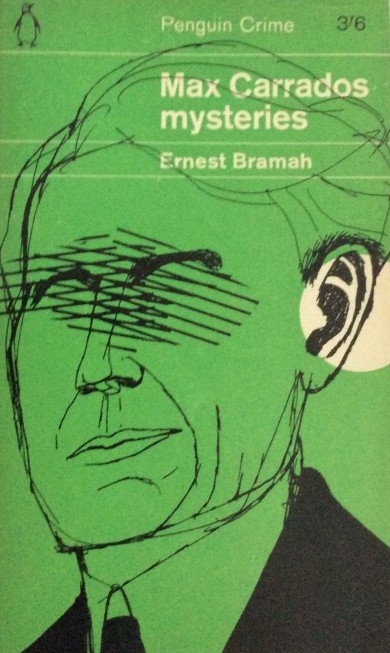Inspiring Older Readers
 posted on 29 Aug 2021
posted on 29 Aug 2021
Max Carrados Mysteries by Ernest Bramah
Ernest Bramah was the pen name of Ernest Brammah Smith (1868 – 1942), an intensely private man who was also a prolific and hugely successful author. Bramah’s writing was extraordinarily eclectic and his writing covered a range of genres – humour, mystery, detective, the supernatural and science fiction or speculative fiction centred on politics. In his day he drew comparisons with the like of H.G. Wells and Arthur Conan Doyle; George Orwell also acknowledged that Bramah’s book What Might Have Been was a significant influence on the writing of Nineteen Eighty Four.
Bramah also broke new ground with the creation of his amateur sleuth, Max Carrados, whose key characteristic is an extraordinary acuity developed because of his blindness. As is the convention with the gifted amateur, Carrados is a man of independent means and although he has a sighted side-kick – Carlyle - who fills in some of the environmental details for him, he barely makes use of him. His blindness appears to be virtually no barrier to his understanding of the mystery or to interpreting most of the evidence that leads him to a solution. He can, for example, ‘feel’ writing on paper and uses that ability without making any sort of issue of this remarkable skill.
The Max Carrados stories rivalled Conan Doyle’s Sherlock Holmes stories for popularity in their day but they are quite different in their approach. Conan Doyle’s stories are rich in character and detail where Bramah opts for a significantly more pared-down approach. These are not ‘detective’ stories in the way we have become accustomed to them but are best described as mysteries or puzzles that require Max Carrados’ agile mind to unravel the solution. If I was looking for a parallel I’d probably opt for Edgar Wallace’s The Mind of Mr J.G. Reeder which came along over a decade later.
This Penguin Books collection which was published in 1964 contains eight stories which, to my mind, vary significantly in quality but all of which play out a mystery of some kind but which are not the standard murder investigation that came to dominate the genre. I tend to agree with the thoughts of Julian Symons whose classic study of the history of detective stories, Bloody Murder, has this to say of the Carrados stories:
“Bramah ignored the limited idea, which had almost become established by the time of his first Carrados book, that every investigation must concern a murder, and the stories are the more interesting for it”
As is inevitably the case with stories that rely so heavily on a powerfully conceived central character, the way the reader feels about what they are reading depends heavily on how you take to that individual. I personally didn’t feel that Carrados quite came alive for me and his blindness felt to me to be more of a gimmick rather than a device for bringing a new perspective to problem solving. We’re being asked to be amazed by just how much like a sighted person Carrados is rather than being presented with an approach to problem solving that in some way challenges the assumptions of the sighted world.
However, this collection is a good introduction to Bramah’s work and I’m glad to have read them because they are a diverting enough entertainment. What they are not, however, are forgotten masterpieces and if you’ve grown up with Sherlock Holmes you might find yourself at a bit of a loss to understand why Max Carrados often outsold Conan Doyle’s superior stories.
Terry Potter
August 2021